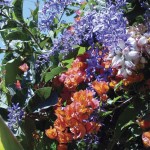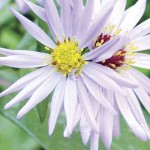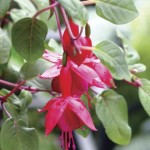May Flowers
Up in northern latitudes, folks get so excited when the first crocus breaks through the snow or when a scrawny poinsettia plant lasts past the holidays. Our British gardening friends bubble with joy when they spot mayflowers, even if those simple flat blossoms are usually a month or two late. After consulting seed catalogs all winter, Nordics nurse their little seedlings in flats indoors, waiting for the right moment to transplant and then hope for no more frost. Gardeners up there work so hard for a few months of blossoms.
Down in the tropics, folks chop away to thin out greenery that would fetch fancy prices in American or European nurseries. Ferns, bromeliads, philodendron are so abundant they block roads and driveways. Machetes are used with surgical slashes to cut back plants that homeowners in the northlands would pay big money to put in their steam-heated living rooms. Gardeners must hack the stuff out of the way to plant anything else.
Gardening in Guatemala’s western mountains is perfect. Other than occasional watering between showers, the biggest work to gardening is deciding what color combinations to pick and put in a vase. Here in the Highlands, we have it not too cold and not too hot but just right: Flowers all year, roses blooming every month, rich green hillsides, and always the colorful climbers spilling over whitewashed walls. Children up north who might need to search hard for sufficient blossoms to fill a tiny May basket can gather huge armloads in fields here or buy more than they can carry for a few quetzales.
You know the common joke that corn grows so fast in Iowa, or wheat in Kansas, or whatever in California, that all you have to do is drop in a seed and stand back quickly before you get pushed aside. That’s not quite literally true in the Guatemalan Highlands, but it sure comes close. A slip from a friend’s geranium, a begonia cutting, a tiny fuschia sprout, seem to double and double again by the weekend. That baby key lime we planted a year ago is well over our heads already and producing lots of fruit. The nazareno vine with its deep purple flowers topped our wall in a few months and is draping itself nicely in both directions. Pink oleander is yards taller than the neighbor’s walls, giving us a colorful treat.
We work so hard back in colder climates to nurse orchids along. It’s amazing to see the varied orchids that are abundant on so many trees here. We’re proud of our roses back in the north, after pruning them at the right time of year, drip-watering ever so carefully, cutting off the hips just right to get another bloom before it’s too cold. No need to prune the plants that produce rich white roses all year at our doorway, until the bushes grow so much they start snagging sweaters as we enter. Bird of paradise and papyrus bushes across our driveway are problems too, as they beg to be cut and used for indoor arrangements.
Drive the valley road out of Antigua and see the endless rows of roses being cultivated for export. Sometimes a husband-and-wife team is in charge of a row, competing with their neighbors to nurture the finest long-stemmed beauties that will be sold when they’re perfect in the floral auctions of Holland and Pennsylvania. Because no fuels are needed to heat the greenhouses here, blossoms can compete in price year-around in the world wholesale markets. Potted plants, orchids and carnations are exported also throughout the year, especially orchids timed to be tied into corsages for the northerners’ Mothers’ Day late in May.
We’ve shrimp around all year, too. Not the eating kind, though they sure look like their crustacean cousins. Pink and yellow shrimp, a couple of inches long, cascading from their mother plant climbing up the walls. And there’s the antheriums, from patent-leather-deep-red through pinks to almost pure white, so colorful every month.
Gardenia’s sweet perfume can be enjoyed any old time. Primrose and zinnia are lush. Calla lilies, aromatic freesia, golden margaritas, deep blue statice arrive for a few months only, rotating with red and white nochebuenas — poinsettias to northerners, blooming for the good nights of the year-end holidays.
May baskets? May flowers? Nice for those who’ve struggled through cold months without. We are happy to enjoy our flowers every month, thank you.
photos: Smith & Riegel / atitlan.net



I am hoping you can help me. I live in the Rio Dulce, Izabal area of Guatemala. I would love to plant my own vegetable garden. But i do not know what zone it is in. I have tried to find a farmers Almenac from my area, but failed. Would you know what is the zone for my area and what month would be best to start planting or someone I can contact. anything you can do to help would be greatly appreciated.
Thanks
Marie